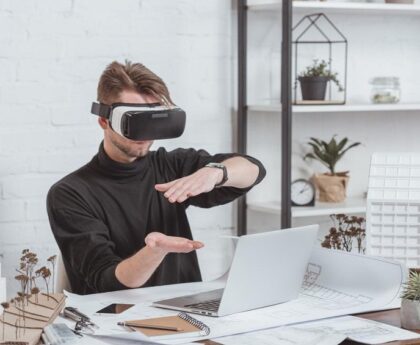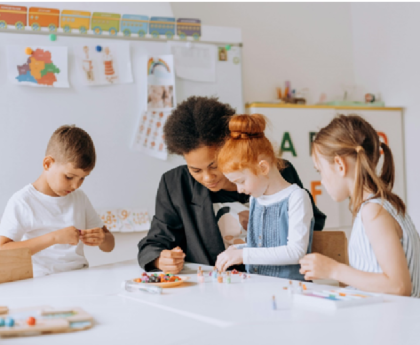Research reveals that nearly 90% of a child’s brain development happens by the age of five. This makes the early years a powerful window for learning and growth.
At this stage, children do not learn the way adults do. They need to touch, feel, stack, and explore using their hands. Montessori education understands this well and builds learning through real, hands-on experiences.
Across the globe, there is one special learning tool used in classrooms — the Montessori Pink Tower. At first, it might just seem like a stack of pink blocks. But these carefully made cubes do much more!
What Exactly is the Pink Tower?
The Pink Tower is a set of ten pink-painted wooden cubes. The cubes come in different sizes, starting from 1 cubic centimeter and going up to 10 cubic centimeters. When placed properly, from the biggest at the bottom to the smallest on top, the cubes form a neat and balanced tower.
Teachers who completed the Montessori Teacher Training Courses believe that this learning tool is carefully designed for sensory education in Montessori classrooms. It helps the child’s eyes and hands notice differences in size, volume, and dimension. This builds visual skills, hand-eye coordination, and a natural sense of order.
What makes it even more special is that the child can explore and fix their own mistakes without someone telling them what to do. There is no need for grades or praise. Solving things by themselves brings real joy and helps the child feel more confident.
How the Pink Tower Works? From Hands-On Beginning to Abstract Thinking
The real wonder of the Pink Tower is how it slowly guides a child from simply playing with blocks to understanding deep, abstract ideas. Here’s how that journey happens:
-
Sensory Exploration
When a child first sees the Pink Tower, they feel curious. They start by touching, holding, and stacking the cubes. At this stage, there is no fixed way to play or build. It is all about exploring with the senses.
The child feels the weight, notices the color, and enjoys stacking the blocks. Montessori education calls this sensory learning- it is the first step toward logical thinking.
-
Thoughtful Handling
After some practice, the child starts to build the tower more carefully. Instead of random stacking, they focus on putting the biggest cube at the bottom and the smallest at the top.
This careful choice shows they are not just playing anymore; they are thinking. They are organizing their actions with a purpose. This is where hands-on experience starts turning into a thoughtful activity.
-
Comparison Work
Next comes the stage where the child begins comparing the cubes. They notice some cubes are heavier, taller, or wider than others. Without being taught, they start to understand differences in size and weight.
This kind of observation helps develop math skills. The child is unknowingly getting prepared for understanding math, logic, and problem-solving later in life.
-
Connecting With Language
Now, you can introduce words like ‘big,’ ‘bigger,’ and ‘biggest.’ These words now make sense because the child has already experienced them in a real, physical way.
Instead of just memorizing words, this child connects language with real-life experiences. This makes it easier for the child to connect real-life actions with new words and ideas.
-
Setting the Stage for Math
Here’s where things get even more interesting. The Pink Tower is not just teaching your child about sizes. It is preparing their brain to understand complex math concepts later. Each cube represents a number cubed. The smallest is 1³, the next is 2³, all the way to 10³.
Even though the child does not realize it, they are absorbing the idea of cube and volume. This kind of learning, without knowing it, is what makes Montessori math materials so effective!
-
Measuring and Calculating
As the child grows, they might start measuring the cubes with a ruler. They learn how each side is different and how to figure out the volume.
This hands-on measuring builds a stronger understanding of real-world math. It is no longer about numbers on paper. It is about understanding what those numbers mean in the physical world.
-
Recognizing Patterns
In many Montessori settings, the Pink Tower is used along with a learning tool known as the Bead Cabinet. When used together, the child starts noticing patterns in numbers.
For example, they might see how cubes relate to square numbers and cube numbers. This kind of pattern recognition is an important part of algebraic thinking, and it starts here, in this early sensory stage.
-
Understanding Growth and Progression
The way the cubes grow in size follows a clear and planned pattern. When the child stacks them, they understand how one size grows into the next.
This builds the foundation for understanding growth patterns and geometric scaling. Again, the child does not need to know the terms. They just need to experience the concept physically.
-
Connecting Different Subjects
It is not just about the subject- math. The child begins to see how systems are built in layers. Just like the tower, biology has a hierarchy (kingdom, phylum, class, etc.). Systems like government have levels — local, regional, and national — built on top of one another.
Even grammar follows a structure. The Pink Tower becomes a model for how things in the real world are organized. It helps the child begin to think across many subjects, even when they are still very young.
Bottom Line
The Pink Tower might look like a simple set of pink blocks, but it gives a child the freedom to explore, think, and learn at their own pace. More than just stacking cubes, that child is building knowledge. Teachers who pursued Online Montessori Teacher Training understand the importance of developing confidence, independence, and a love for learning. All from a simple tower that teaches so much without saying a word.





